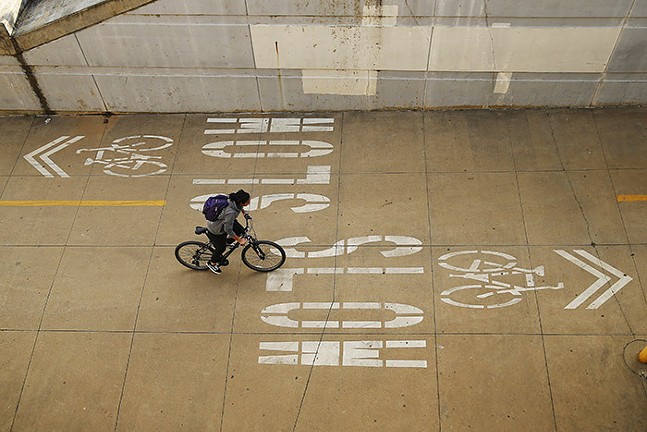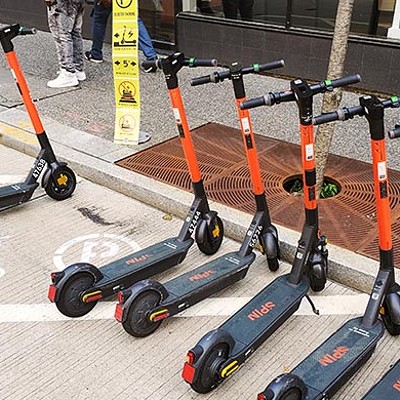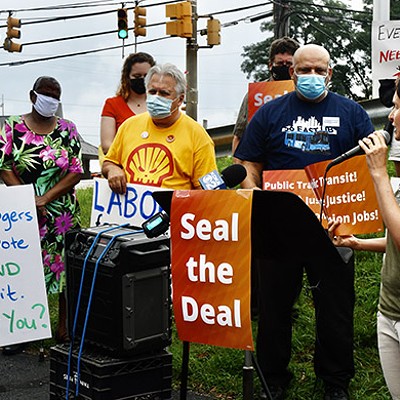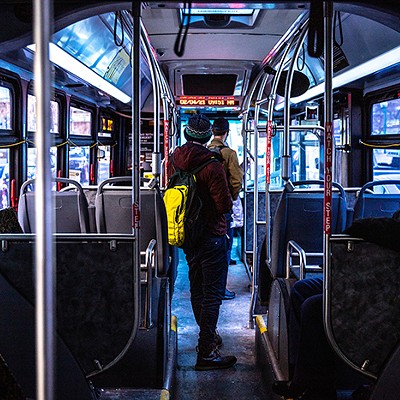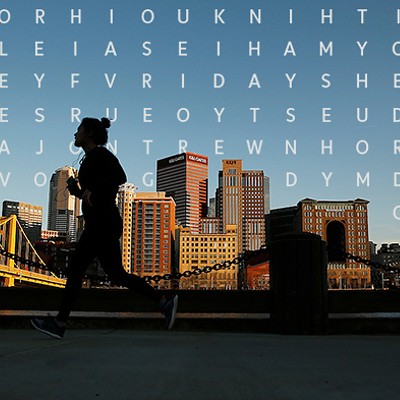But unlike many cities in America, Pittsburgh actually offers a fair number of non-car travel options, and a significant section of Pittsburghers regularly utilize those. Pittsburgh isn’t on the same level for non-car transit as New York City, San Francisco, or Washington, D.C., but for a city its size, and one in a Rust Belt region, Pittsburgh punches well above its weight.
According to a 2019 City Lab article that measured each metro area in the U.S. by how amenable they are to living without owning a car, Pittsburgh was ranked 11th out of areas with more than 1 million people. A 2020 study from the website CompareCarInsurance.com ranks Pittsburgh as the seventh least car-dependent metro in the U.S.
Casual observers might find these rankings shocking, but the data backs it up. More than 17% of Pittsburgh city residents commute via public transit. Bike commuting in the city is only at about 2%, but has doubled over the last decade. An impressive 11% of Pittsburghers walk to work, putting it in the top 10 of U.S. cities for walking rates.
And there are reasons to believe that things can, and are, getting better for Pittsburghers without cars. The cycling network is expanding with bike lane extensions and new bikeshare stations, including connections into predominantly Black neighborhoods like Hazelwood. Local politicians are advocating strongly for more non-car infrastructure projects, like extending the East Busway into the Mon Valley and procuring funds to refurbish several public staircases. City officials are embracing seasonal closures of streets to cars as a way to provide more room for outdoor dining and people riding bikes, scooters, or skateboards. Some people are also starting to explore our rivers as transportation options. Even Pittsburgh’s over 150-year-old incline still frequently transports people from Mount Washington.
There are several reasons why Pittsburgh showcases relatively strong non-car rankings among U.S. cities. Infrastructure like busways provide rapid transit throughout three different sections of the county, with the Martin Luther King Jr. East Busway leading the way and arguably being one of the most efficient non-heavy rail transit corridors in America. It carried 24,000 passengers a day pre-pandemic. Pittsburgh’s light rail lines also provide tens of thousands of suburban commuters a public transit option to commute Downtown, when many other American regions lack such amenities.
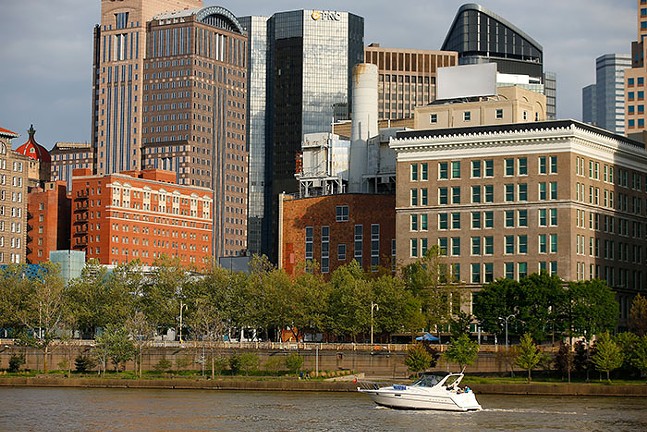
The newest bike network expansion is into Hazelwood, which now has a separated bike trail through the Hazelwood Green development. This new trail connects to the Eliza Furnace bike trail — which heads west to Downtown and connects to Oakland through the Junction Hollow trail — as well as linking to the trails across the Monongahela River into the South Side and on to Homestead and McKeesport. The new Hazelwood trail also recently received three Healthy Ride bikeshare stations, giving those without access to a bike the opportunity to ride.
Other potential bike expansions could include the “Brilliant Line” trail from Homewood to Aspinwall. The railway that owns the former elevated rail line has agreed to sell, and a campaign has been started to purchase the line. Bike advocates are excited about the possible connections it can make.
Another potential expansion starting to pick up steam is the extension of the East Busway. The line currently starts in Downtown and ends in Swissvale, but transit officials and advocates want to see it extended with spurs to Monroeville and deeper into the Mon Valley to McKeesport. Not only have local Mon Valley officials joined the call, but Allegheny County Executive Rich Fitzgerald recently stumped for the expansion on national news, indicating that if Congress were to pass a large-scale infrastructure plan, the expansion would be a priority.
Communities in the Mon Valley are home to an increasing Black population, as well as low-income groups that data shows are becoming increasingly reliant on public transit. Extending the busway could be a huge boon for the former steel mill communities.
“Thirty-forty years ago when those mills shut down, those communities still have not recovered,” said Fitzgerald to the CBS Evening News on March 31. “So to be able to connect those communities to the job centers provides opportunities.”
Federal officials like U.S. Rep. Mike Doyle (D-Forest Hills) also wants to improve walking conditions in the city of Pittsburgh. His latest earmark request includes $5 million to reconstruct eight public steps located throughout the city. He has also requested $2 million from the 2022 fiscal year budget for pedestrian and street crossing improvements on North Avenue in the North Side, which has some of the highest walk commuting rates in the city. This is on top of the dozens of projects Pittsburgh’s Department of Mobility and Infrastructure has undertaken to make city streets safer for pedestrians.
And there could be more non-car transit options coming to the city. Mayor Bill Peduto has discussed the possibility of water taxis running along the rivers, and some kayakers and paddle boarders have already taken advantage of these waterways. During the warm months, Scoobi offers mopeds to use within select city neighborhoods, and officials are expecting electric scooters to hit the streets sometime in the near future (once the state legislature legalizes the vehicles).
Until then, Pittsburgh has embraced shutting down popular streets to car traffic to allow for more space for outdoor dining and gathering, with plans to shut down some Downtown streets to traffic this summer. Officials are even considering making some of these permanent, like in sections of Market Square.
Let’s hope this is just the start of efforts to loosen the grip that cars have had on Pittsburgh’s transportation system.

